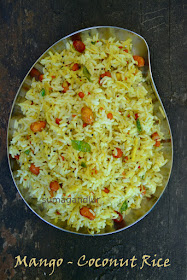Dhaabas, the roadside eateries serving Punjabi food is a common feature along the Indian highways. The traditional dhaabas mostly cater hearty food at a reasonable price to weary truck drivers and the others who are eager enough to try out their greasy offerings. I have not been adventurous enough to try out the food from a roadside shack but have tried to create some of their dishes in my kitchen albeit low cal versions. This dhaabay di dal which literally means a lentil preparation from dhaaba comes from a cookbook by Sanjeev Kapoor and have been tried in my kitchen many times over the years. This tasty and spicy dal is prepared using a mixture of three different kind of lentils and is a favorite of mine.
Ingredients:
1/4 cup kidney beans / rajma
1/4 cup whole black gram / sabut urad dal
2 to 4 tbsp. roasted split chickpeas / chana dal
2 tbsp. oil
1 tsp. ginger - garlic paste
1 small green chillie, chopped fine
1 small onion, peeled and chopped
1 tomato, chopped
1 tsp. cumin powder
Salt to taste
1/2 tsp. red chili powder
1 to 1.5 tbsp. butter
1 tbsp. kasuri methi
Minced cilantro to garnish

Method:
* Soak all the beans overnight or for about 8 to 10 hours and pressure cook them softly adding sufficient water. Drain the water if preferred and lightly mash the dal with the back of the ladle.
* Heat oil in a pan and add ginger and garlic paste and saute until golden brown. Next add chillies and onion and fry until the onion start to brown.
* Next add cumin and chili powders and stir. Add tomato pieces and cook until mushy.
* Add the cooked dals, butter, salt, cilantro and extra water (to the desired consistency) to the pan and stir. Bring it to a boil, lower the heat and simmer for about five minutes.
* Crush kasuri methi between your palms and sprinkle over the dal. Stir and turn off the stove.
* Serve hot with rotis / rice.

This goes to Blogging marathon #69, under the theme 'Bookmarked Recipes'. Check here to find out what the other marathoners are cooking as part of the BM.
Comments


























































